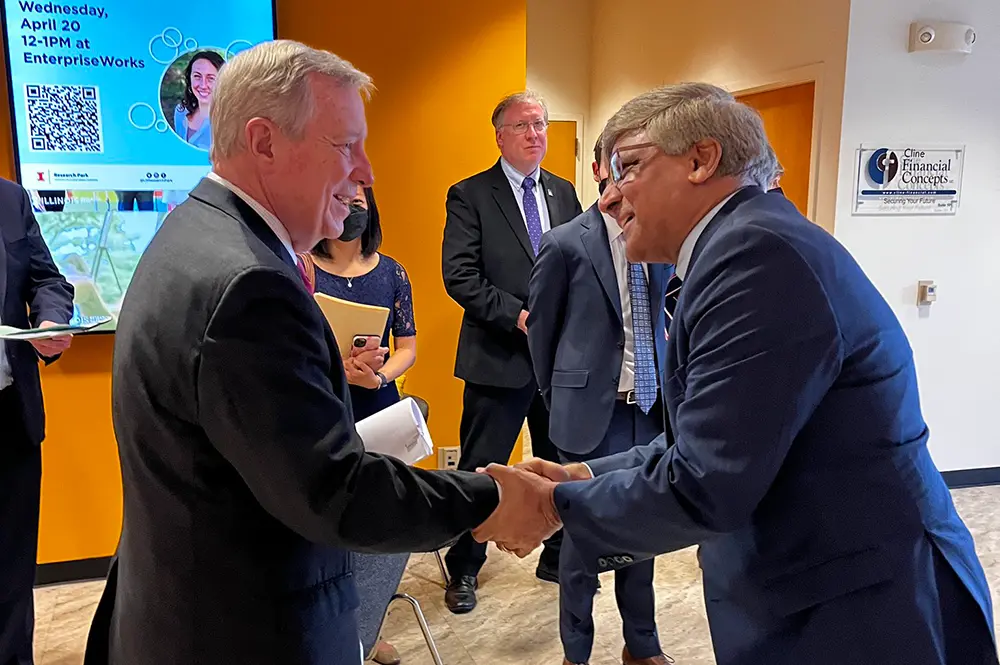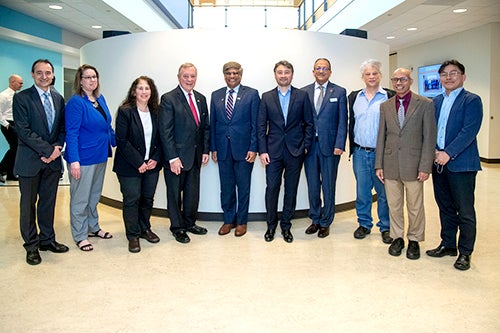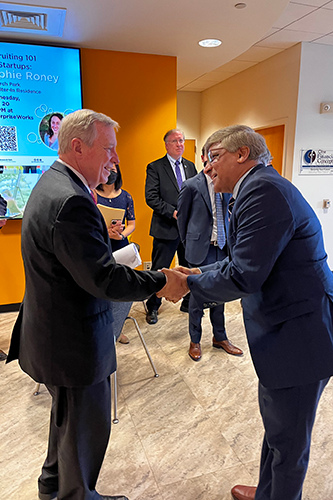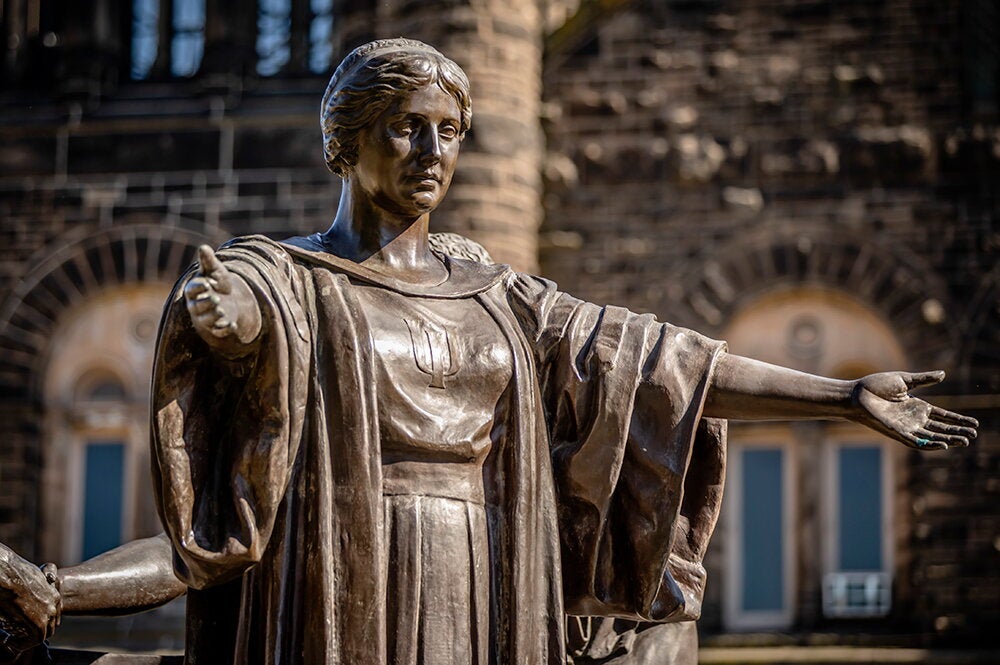

The National Science Foundation awarded a 7-year, $15 million project to a multi-university team led by the University of Illinois at Urbana-Champaign, including at least two researchers in the College of LAS. The resulting groundbreaking and path-finding research, entitled “Mind in vitro - Computing with Living Neurons,” will imagine computers and robots that are human designed, but living.
The project is supported by the NSF Expeditions in Computing program, which was created more than a decade ago by the Foundation’s Directorate for Computer and Information Science and Engineering (CISE) to build off past successes and afford its research community new, ambitious opportunities to pursue.
This Expedition—just one of two to be awarded this year—will seek answers to a host of new and fundamental questions: Can computing systems be built out of living neurons? Can they achieve basic hallmarks of cognition such as learning, attention, curiosity or creativity, so pervasive in biology yet elusive in modern computing? How do we design and fabricate the envisioned “wetware”? How do we understand its language? How do we think of software in terms of emergence rather than prescribed logic?
Several researchers from UIUC are involved, including professors Hyunjoon Kong, in the Department of Chemical and Biomolecular Engineering, and Sepideh Sadaghiani, in the Department of Psychology.

Kong will lead the wetware team, one of four “thrusts” that make up full team. Wetware is described as the elements considered to be equivalent to hardware and software in a human being. Kong has authored over 150 research papers and developed various active hybrid materials for molecular and cell therapies. Sadaghiani’s research is focused on large-scale neurocognitive networks, functional connectivity, and cognitive control.
The resulting technology is anticipated to have profound, lasting impact in virtually every field related to information processing, robotics, health and medicine, with deep ramification across human knowledge. It has the potential to revolutionize neuroscience, with radically new behavioral models.
“In this Expedition we imagine computers and robots that are human designed, but living. That can be programmed, but whose behaviors are not specified—and instead, emerge. These systems will grow, heal, learn, and explore. They will open a new space of possibilities yet to be imagined,” said Mattia Gazzola, Mind in vitro co-director and professor of mechanical science and engineering at UIUC.
In addition to Gazzola, the project features co-directors Nancy M. Amato, head of the Department of Computer Science at UIUC; and Taher Saif, professor of mechanical science and engineering at UIUC.
Also, the project includes assessment lead Aileen Reid, professor in the School of Education at UNC Greensboro; ethics lead Nicole Martinez, professor at the Stanford Center for Biomedical Ethics and Department of Pediatrics at Stanford University; and Amato as outreach and education lead.
Teams of researchers and students will collaboratively develop the science and technology to fabricate, model, program, scale and embody biological processors. Their work will unfold across four thrusts, structured around what makes a system compute and act:
1. Wetware—led by Hyunjoon Kong, professor, Chemical and Biomolecular Engineering at UIUC—will integrate neural cultures on an engineered platform that provides input/output interfaces.
2. Architecture—led by Josep Torrellas, professor, computer science at UIUC – will create a programmable substrate to support useful computations.
3. Programming—led by Lawrence Rauchwerger, professor, computer science at UIUC—will develop a software stack and a programming model to configure and run the substrate.
4. Robotic embodiment—led by Gazzola and Saif—will demonstrate multi-sensory processing and probe the emergence of rudimentary cognitive traits in motile biological robots.
The following individuals compose the rest of this research team: Rashid Bashir, dean, The Grainger College of Engineering, UIUC; John M. Beggs, professor, physics, Indiana University Bloomington; Karin Dahmen, professor, physics, UIUC; John Rogers, professor, material, biomedical engineering, and neurological surgery, Northwestern University; Sepideh Sadaghiani, professor, psychology, UIUC; Ivan Soltesz, professor, neurosurgery and neurosciences, Stanford University; and Lav R. Varshney, professor, electrical and computer engineering, UIUC.
This project will also serve as a catalyst of ethics research. Organizers hope that its evocative power will excite students from all backgrounds about computing, with that energy leveraged to initiate and grow a Mind in vitro community through internships, workshops, seminars, and a dedicated mini-curriculum. Art-of-Science exhibitions in massive public spaces will enable researchers to connect with a broad and diverse audience. With a full commitment to open science at its core, protocols, software, hardware, and educational material will all be made freely available.
“This Expedition captures the imagination, and I’m sure it will accelerate interest in STEM fields in general—and computing in particular,” said Susan A. Martinis, vice chancellor for research and innovation at UIUC. “This type of collaborative, creative work really speaks to our research mission at the University of Illinois Urbana-Champaign, driving student experiences and community engagement, and powering innovation and positive change locally, nationally, and globally.”
The team collectively offers the resources and opportunities necessary for this program. UIUC has major laboratories that provide state-of-the-art computing (National Center for Supercomputing Applications), cell culturing and imaging (Carl R. Woese Institute for Genomic Biology, Beckman Institute), fabrication (Holonyak Micro and Nanotechnology Lab), and characterization (Materials Research Laboratory) capabilities. Stanford’s Wu Tsai Neuroscience Institute has cutting-edge technology for neural circuit manipulation. Northwestern’s Institute for Bioelectronics provides world-class bio/nanofabrication abilities. IU is home to the Gill Center for Biomolecular Science and the Network Science Institute.
"Both of the 2022 awards support efforts that envision future materials for computing systems in a post Moore's law era and that map out comprehensive research from the materials themselves to the higher level application opportunities and societal benefits that can emerge from them," said Margaret Martonosi, NSF assistant director for computer and information science and engineering.


